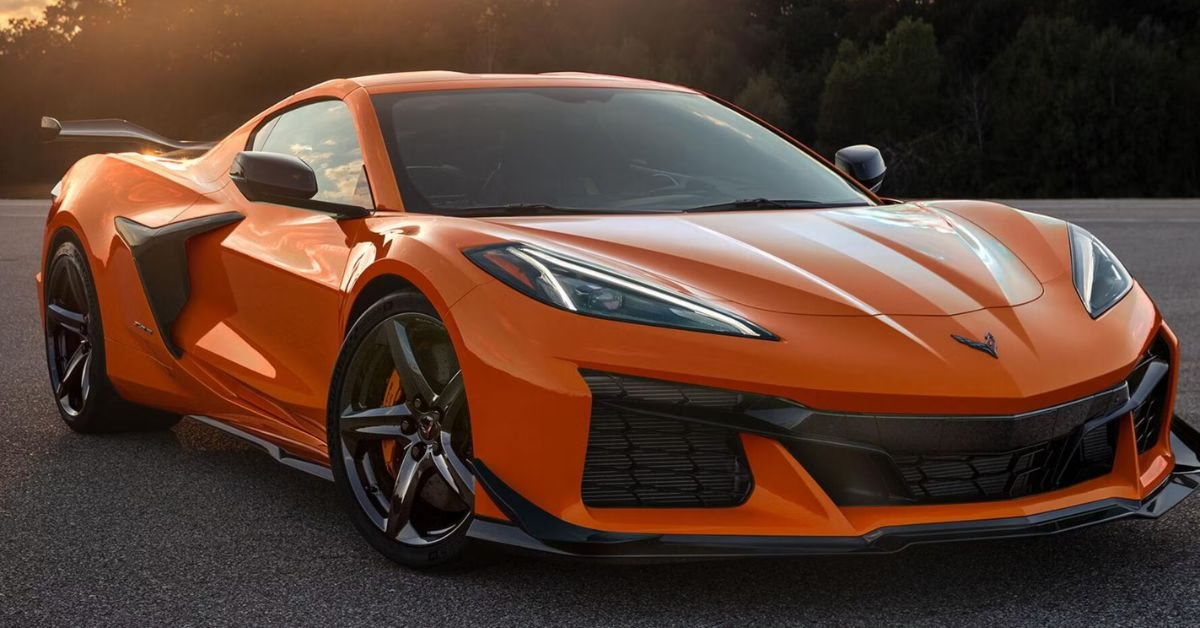The Chevrolet Corvette has never been just a sports car. From its roots as a fiberglass-bodied experiment in 1953 to the C8’s flat-plane-crank fury, the Corvette has consistently pushed American performance into new territory.
Each generation reflects a shift in engineering priorities, cultural context, and Corvette philosophy. Some eras chased raw horsepower, others chased lap times or global credibility.
This guide traces the Chevrolet Corvette generations from C1 to C8 with a clear focus on what changed, why it mattered, and how each generation built—or broke—the Corvette legacy. If you want more than surface-level nostalgia, you’re in the right place.
C1 Corvette: 1953 to 1962

| Engine | 3.9L I6 (1953–54), 4.3L–5.4L V8 (1955–62) |
| Horsepower | 150–360 hp |
| Torque | 223–352 lb-ft |
| 0–60 mph | 11 sec (1953), 5.9 sec (1962 FI V8) |
| Transmission | 2-speed auto, 3- or 4-speed manual |
| Drivetrain | RWD |
| Curb Weight | 2,800–3,100 lbs |
| Production Volume | 69,015 total units |
| Approx. Price Today | $30,000–$250,000+ (condition and rarity dependent) |
Origins and Design Direction
The Corvette began as a bold experiment. Harley Earl wanted an American sports car to match the flair of Europe’s finest, and in 1953, Chevrolet delivered a concept that turned heads at the Motorama.
It went into production the same year, though the early cars were more style than substance—just 300 were built, all white with red interiors and fiberglass bodies. Underneath, much of the hardware came from sedans, which held back its performance chops early on.
Engineering Highlights
The first few years were underwhelming from a driver’s perspective. The 3.9L “Blue Flame” inline-six and 2-speed Powerglide didn’t stir much excitement. That changed in 1955 with the arrival of the 265ci V8, and a manual transmission option followed shortly after.
By 1957, Chevrolet was offering fuel injection and pushing 1 horsepower per cubic inch with the 283 V8. The C1 ended strong with the 327 V8 in 1962—a high-revving, torque-rich engine that gave the car real muscle.
Notable Trims and Performance Variants
- Fuel-Injected Models (1957–1962): The ’57–’62 fuel-injected models are the sweet spot for performance collectors.
- 327/360 hp (1962): The 1962 327/360 hp spec is often seen as the ultimate C1.
- Early V8 Models (1955): Earlier V8 cars from 1955 are valued for their historical significance, bridging the gap between show car and true sports car.
- Rare Options: Rarer options and RPO codes like 579 add value, especially when paired with original colors and trim packages.
Styling and Market Reception
Design-wise, the C1 shifted over time—from clean and conservative in the early years to full-blown ‘50s excess later on. Quad headlights, lots of chrome, and a new rear end in 1961 gave it a wilder look. That “ducktail” rear with round taillights became a defining Corvette trait. While the first models struggled to win over gearheads, the V8 era quickly changed that perception.
Collector and Enthusiast Insight
The earliest C1s are rare and expensive but not great to drive. If you want something usable and still collectible, the later cars—especially the 1962 with fuel injection—strike a better balance. Parts are readily available, and the C1 community is strong. It may not be the fastest vintage Vette, but it’s the one that started it all.
C2 Corvette: 1963 to 1967
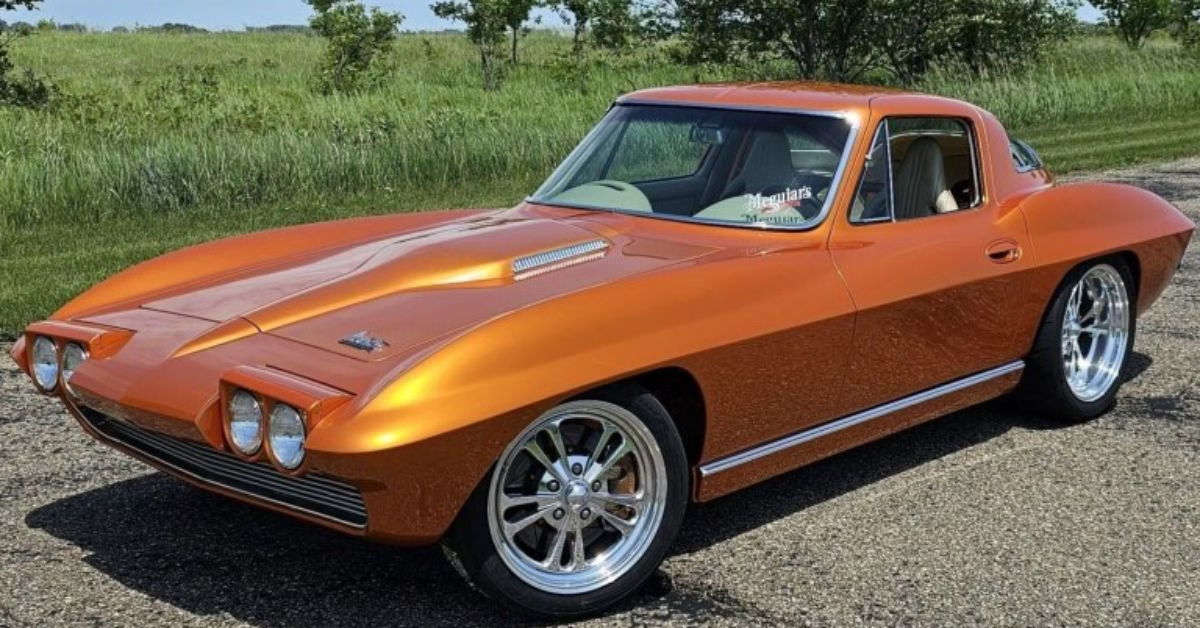
| Engine | 5.4L–7.0L V8 |
| Horsepower | 250–500 hp (underrated) |
| Torque | 350–460 lb-ft |
| 0–60 mph | 5.3 sec (427/435), 4.7 sec (L88 est.) |
| Transmission | 3- or 4-speed manual, 2-speed Powerglide auto |
| Drivetrain | RWD |
| Curb Weight | 3,100–3,400 lbs |
| Production Volume | 117,964 units |
| Approx. Price Today | $70,000–$800,000+ (L88, Z06, split-window) |
Origins and Design Direction
The C2 was a clean break from the first-gen car. It rode on a shorter wheelbase and introduced the split-window coupe in 1963. Larry Shinoda and Bill Mitchell shaped the body, but underneath, Zora Arkus-Duntov pushed for independent rear suspension. The result was a sharper, more agile car that finally backed up the Corvette’s looks.
Engineering Highlights
Engines ranged from a 327 V8 to the 427 big-blocks. Fuel injection hung on until 1965, but most buyers went for the grunt of the carbureted options. By 1967, the L88 arrived with a stripped interior and an underrated 430 hp. The C2 also introduced four-wheel disc brakes and optional knock-off wheels.
Notable Trims and Performance Variants
- Z06 (1963): The 1963 Z06 was a factory track package with bigger brakes and a stiffer setup.
- L84 & L79: L84 and L79 small-blocks made solid street performers.
- L88 & Collectibles: The L88 was built for serious racers. The rarest and most valuable C2s today are split-window ’63s, L88s, and well-documented Z06 cars.
Styling and Market Reception
The Sting Ray’s sharp lines, hidden headlights, and fastback coupe hit the mark. The split rear window only lasted one year, but became a collector’s favorite. Corvette sales took off, and the C2 helped turn the car into a performance icon.
Collector and Enthusiast Insight
C2s are prized for their mechanical purity and aggressive styling. The 1967 models are the most refined, but every year has its fans. Collectors chase the rare trims, but even base cars hold their value thanks to the way they drive and the era they represent.
C3 Corvette: 1968 to 1982
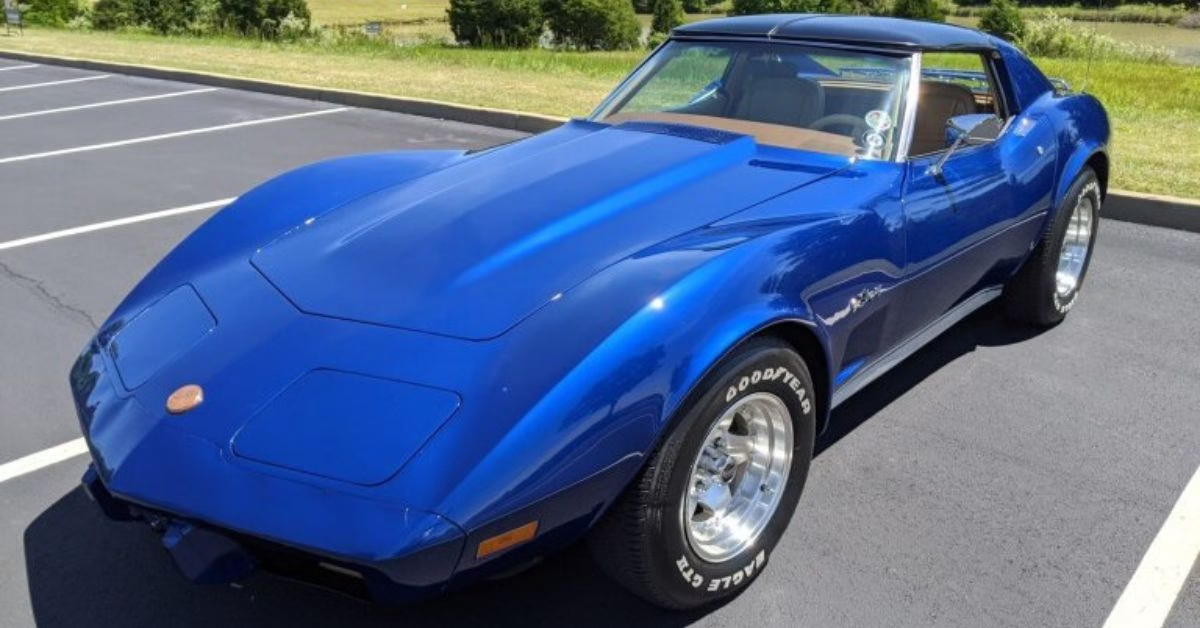
| Engine | 5.4L–7.4L V8 (early), 5.0L–5.7L V8 (later) |
| Horsepower | 165–460 hp (gross) / 200 hp (net by 1982) |
| Torque | 260–500 lb-ft |
| 0–60 mph | 5.5 sec (early big-blocks), 7.5–8.5 sec (late models) |
| Transmission | 3- or 4-speed manual, 3-speed auto |
| Drivetrain | RWD |
| Curb Weight | 3,400–3,600 lbs |
| Production Volume | 542,861 total |
| Approx. Price Today | $12,000–$75,000+ (big-block or limited editions) |
Origins and Design Direction
The C3 debuted in 1968 with bodywork lifted straight from the Mako Shark II show car. Though the styling was radical, the underpinnings came from the C2. It rode on the same chassis with only minor tweaks. Bill Mitchell led the exterior design, while Zora Arkus-Duntov focused on performance. The removable T-top roof debuted here and quickly became a signature feature.
Engineering Highlights
Early C3s carried over serious firepower from the late C2 years. The 427 big-blocks were at their peak, including the brutal L88 and ZL1. In 1970, displacement swelled to 454 cubic inches, with the LS6 offering 425 hp. But emissions rules and unleaded fuel mandates hit hard by 1971.
By mid-decade, horsepower had been choked and net ratings replaced gross, making later figures look worse on paper. Suspension updates were minimal, but in 1980, the car got lighter thanks to aluminum parts.
Notable Trims and Performance Variants
- L88 & ZR1 (1967–1969): The standout performance trims came early. The L88 was barely street-legal, and the ZR1 package added heavy-duty cooling and brakes.
- LT-1 (1970–1972): The LT-1 small-block offered high-revving precision over brute force.
- Later Editions: Later years brought cosmetic packages like the 1978 Indy Pace Car and the Collector Edition in 1982. By then, performance was a shadow of what it once was.
Styling and Market Reception
The C3’s long run meant constant styling tweaks. Chrome bumpers were phased out in favor of urethane in 1973–74. New safety and emissions rules dictated much of the later design. Inside, the cabin shifted toward comfort over sportiness. Despite the performance drop, sales stayed strong, especially in the late ’70s as the Corvette became more of a cruiser than a corner carver.
Collector and Enthusiast Insight
Early C3s (1968–72) are the prize, especially big-block cars and anything with the ZR1 or L88 code. Later models are more affordable but come with emissions-era compromises. Still, they’re a gateway into vintage Corvette ownership. The C3 isn’t the sharpest-handling Vette, but it’s one of the most recognizable and still turns heads today.
C4 Corvette: 1984 to 1996
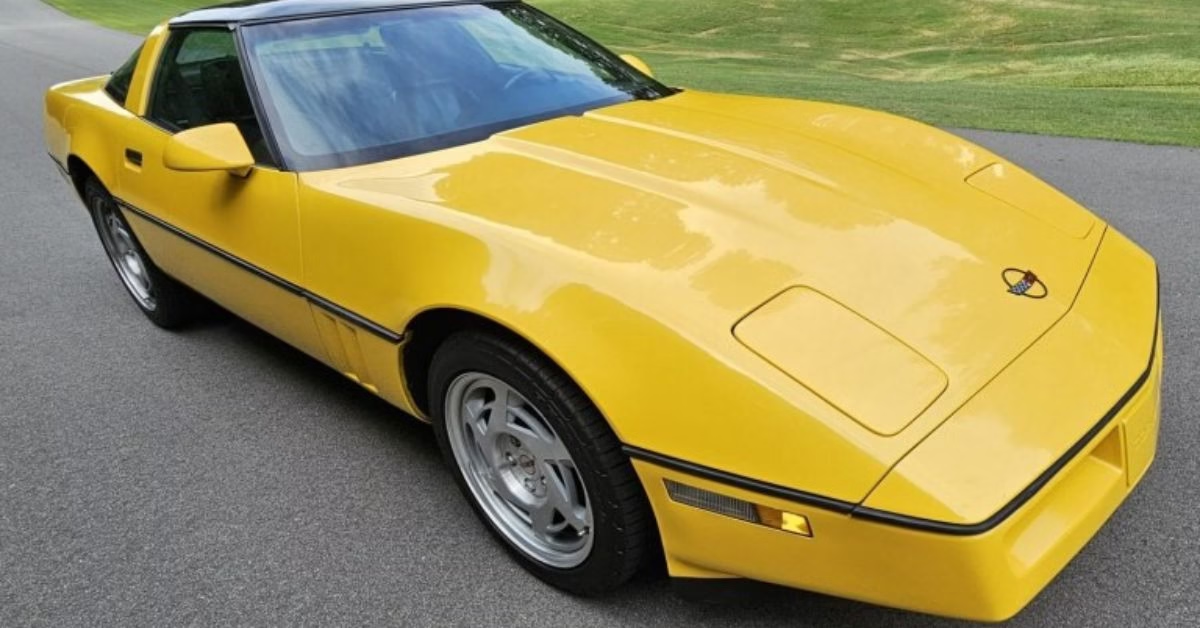
| Engine | 5.7L V8 (L83, L98, LT1), 5.7L DOHC LT5 (ZR-1) |
| Horsepower | 205–405 hp |
| Torque | 290–385 lb-ft |
| 0–60 mph | 4.4–6.7 sec |
| Transmission | 4-speed auto, 4+3 manual (early), 6-speed manual |
| Drivetrain | RWD |
| Curb Weight | 3,200–3,500 lbs |
| Production Volume | 358,180 (including 6,939 ZR-1s) |
| Approx. Price Today | $7,000–$40,000+ (ZR-1 or Grand Sport) |
Origins and Design Direction
The C4 was a clean-sheet redesign after 15 years of the C3. It debuted in 1984 with a sharp, low-slung body and pop-up headlights. Dave McLellan led the engineering, introducing a new uniframe chassis that combined a central steel spine with fiberglass panels for better rigidity. Chevrolet skipped a public 1983 model; only one exists today, kept at the National Corvette Museum.
Engineering Highlights
Handling took priority over brute force in the early years. The 205-hp L83 engine wasn’t thrilling, but the aluminum suspension, transverse composite leaf springs, and near 50/50 weight balance gave the car sharp reflexes. The L98 engine arrived in 1985 with tuned port injection, pushing output to 230 hp.
In 1989, the ZF 6-speed manual joined the lineup, and by 1992, the new LT1 V8 delivered a proper 300 hp with improved throttle response. Chassis tweaks and electronic suspension options (like FX3 and later Selective Ride Control) kept the C4 competitive deep into the ’90s.
Notable Trims and Performance Variants
- ZR-1 (1990–1995): The ZR-1 defined the C4’s high point. Released in 1990, it featured a 375-hp (later 405-hp) LT5 engine designed with Lotus and built by Mercury Marine. Wider rear fenders, unique taillights, and massive performance (0–60 in under 5 seconds, 180+ mph) made it a supercar in its day.
- Grand Sport & Collector Edition (1996): Other standouts include the 1996 Grand Sport—Admiral Blue with a white stripe and red hash marks—and the 1996 Collector Edition in Sebring Silver. Both are highly sought today.
Styling and Market Reception
The C4’s wedge shape and flush glass gave it a futuristic edge in 1984. The digital dash and driver-focused cockpit were bold moves, though the early interior materials drew criticism. While the car improved mechanically over time, its styling became less cutting-edge by the ’90s. Still, performance updates and motorsport wins boosted its reputation.
Collector and Enthusiast Insight
The C4 sits in a sweet spot for buyers after classic V8 fun without breaking the bank. ZR-1s offer real collector appeal, but late-model LT1 cars and Grand Sports are rising in value. It’s the most affordable way into a modern Corvette with genuine engineering chops.
C5 Corvette: 1997 to 2004
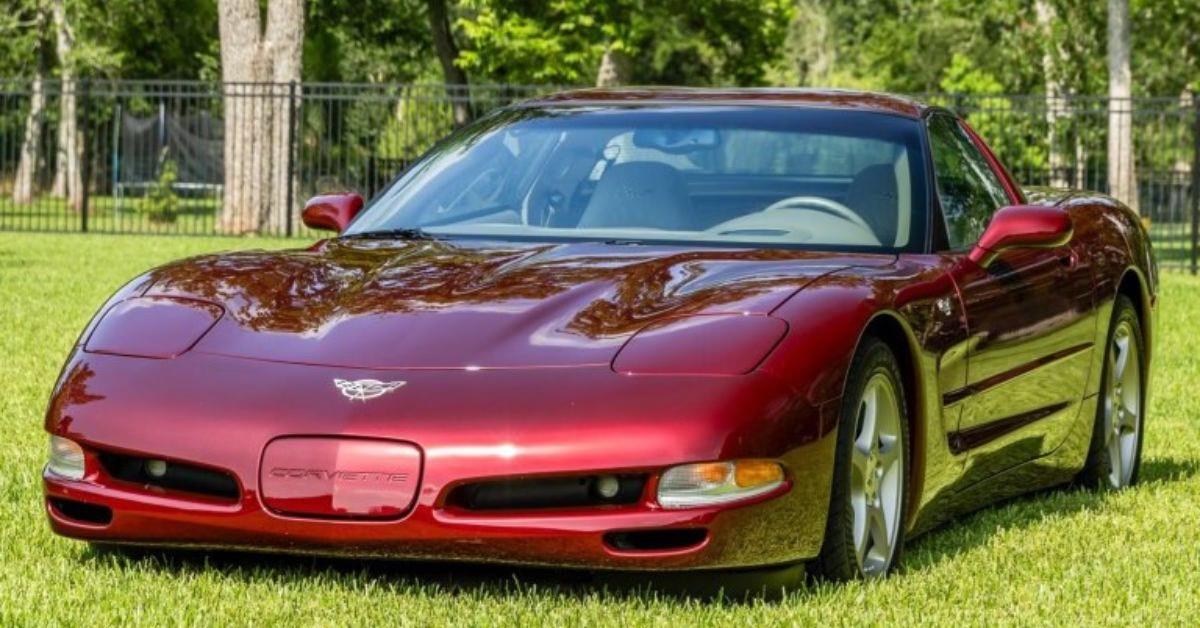
| Engine | 5.7L V8 (LS1), 5.7L V8 (LS6 – Z06) |
| Horsepower | 345–405 hp |
| Torque | 350–400 lb-ft |
| 0–60 mph | 3.9–4.7 sec |
| Transmission | 6-speed manual, 4-speed automatic |
| Drivetrain | RWD |
| Curb Weight | 3,200–3,300 lbs (3,118 lbs Z06) |
| Production Volume | 248,715 (including 39,940 Z06s) |
| Approx. Price Today | $12,000–$40,000+ (Z06 models in top condition) |
Origins and Design Direction
The C5 wasn’t a facelift—it was a clean-sheet rethink. Built around a new hydroformed steel frame and a rear-mounted transaxle, it moved away from the carryover engineering of past generations. The layout gave the car better balance and rigidity, and the design followed suit.
Pop-up headlights returned, paired with smoother, more aerodynamic bodywork. Cabin layout and material quality saw real improvement. For the first time, a Corvette felt cohesive inside and out.
Engineering Highlights
One of the biggest changes was the move to the LS1 V8. At 5.7 liters, it started at 345 horsepower, rising to 350 hp by 2001. It wasn’t just about the numbers—this engine was lighter, more compact, and rev-happy.
Paired with a rear transaxle and 6-speed manual, the C5 delivered close to 50/50 weight distribution and handling that could finally match its straight-line punch. It didn’t just go fast—it stayed composed doing it.
Notable Trims and Performance Variants
- Z06 (2001–2004): Chevy raised the bar again in 2001 with the Z06. Using a new LS6 engine with better breathing and higher compression, it made 385 hp—bumped to 405 in 2002. But the power was only part of it.
The Z06 got stiffer suspension, unique wheels, thinner glass, a fixed-roof coupe body for added rigidity, and weight-saving touches like a titanium exhaust. It wasn’t just the fastest C5, it was the most focused, built with track use in mind, but still fully usable on the street.
Styling and Market Reception
The C5’s design sparked mixed opinions at first, especially the rounded rear and large taillights. But its proportions, long hood, and low stance gave it presence. More importantly, the public responded to how well it drove. Reviews praised its performance-per-dollar, especially once the Z06 arrived. For many, it felt like the first Corvette that didn’t need excuses to stand next to European rivals.
Collector and Enthusiast Insight
Today, the C5 is widely considered a performance bargain. The base coupe and convertible are great entry points, but it’s the Z06 that has collectors watching values. Prices for clean, low-mileage examples are trending upward.
With its analog character, naturally aspirated V8, and rock-solid LS foundation, the C5 appeals to both drivers and builders. It was the moment the Corvette stopped chasing and started setting the pace.
C6 Corvette: 2005 to 2013
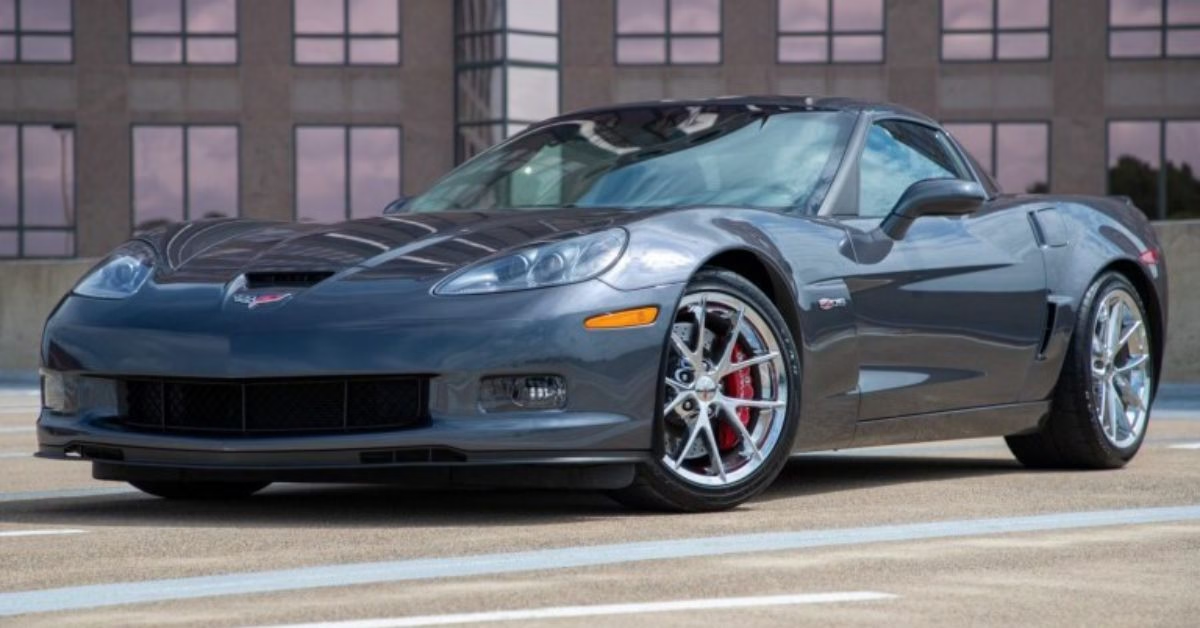
| Engine | 6.0L LS2, 6.2L LS3, 7.0L LS7 (Z06), 6.2L Supercharged LS9 (ZR1) |
| Horsepower | 400–638 hp |
| Torque | 400–604 lb-ft |
| 0–60 mph | 3.3–4.2 sec |
| Transmission | 6-speed manual, 6-speed automatic |
| Drivetrain | RWD |
| Curb Weight | 3,100–3,400 lbs |
| Production Volume | 215,123 (Z06: 39,940, ZR1: 4,684) |
| Approx. Price Today | $20,000–$90,000+ (ZR1 models in prime condition) |
Origins and Design Direction
With the C6, Chevrolet refined rather than reinvented. Gone were the pop-up headlights, replaced with fixed xenon units for a sleeker, more modern profile. The wheelbase stayed short, but the proportions tightened and aerodynamics improved. Chevy had its eyes on more than just American roads; this Corvette aimed to carve corners on European tarmac too.
Inside, materials saw a long-overdue upgrade. It still wasn’t luxurious, but the cabin felt more intentional: better plastics, firmer seats, and less of the clunky, hollow feel that dogged earlier models.
Engineering Highlights
The base C6 launched with the LS2 V8—6.0 liters, 400 hp, and instant torque on tap. It gave way in 2008 to the LS3, a 6.2-liter mill with 430 hp, or 436 with the optional performance exhaust. Either setup delivered sub-4.3-second sprints and a roar that made no apologies.
Transmission options stayed simple: a six-speed manual or a six-speed automatic with paddle shifters. The manual offered full engagement, but the auto didn’t dull the experience much—something many buyers appreciated.
Notable Trims and Performance Variants
- Z06 (2006): The Z06 returned with a vengeance. Its 7.0L LS7 was hand-built and naturally aspirated, revving to 7,000 rpm and putting out 505 hp. Chevy used aluminum for the chassis, magnesium for key components, and carbon fiber for the fenders. At around 3,130 lbs, the Z06 was a track weapon that felt alive in your hands.
- ZR1 (2009): Powered by a supercharged 6.2L LS9, the ZR1 delivered 638 hp and over 600 lb-ft of torque. Carbon-ceramic brakes, carbon body panels, and a clear polycarbonate hood window made it both aggressive and exotic. Top speed? Over 200 mph.
- Grand Sport (2010): The Grand Sport split the difference. It wore the Z06’s wider body, had better brakes and suspension, but kept the LS3. It was the sweet spot—usable on the street, capable on track.
Styling and Market Reception
Ditching the pop-ups stirred controversy at first, but the new face quickly grew on buyers. It looked leaner, tighter, and more athletic. Even the base coupe had presence, while the widebody Z06 and ZR1 models looked like race cars for the road. The C6 was finally a Corvette that looked as sharp as it drove.
Collector and Enthusiast Insight
The C6 marks a turning point—modern enough to daily, raw enough to thrill. Z06s with low miles are climbing in value, and clean ZR1s are already collectible. But even a base C6 delivers serious performance per dollar. No touchscreens, no layers of driver aids—just engine, grip, and noise. For purists who still want an analog feel with modern pace, this generation nails it.
C7 Corvette: 2014 to 2019
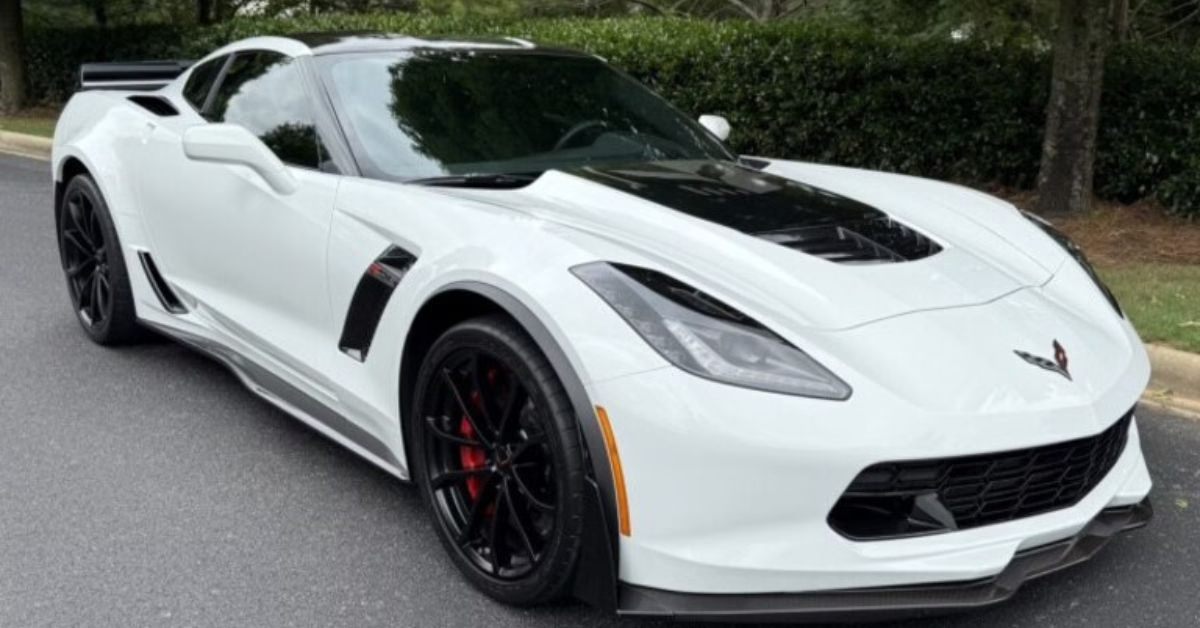
| Engine | 6.2L LT1, 6.2L Supercharged LT4 (Z06), 6.2L Supercharged LT5 (ZR1) |
| Horsepower | 455–755 hp |
| Torque | 460–715 lb-ft |
| 0–60 mph | 2.9–3.9 sec |
| Transmission | 7-speed manual, 8-speed automatic |
| Drivetrain | RWD |
| Curb Weight | 3,300–3,650 lbs |
| Production Volume | 300,000+ (ZR1: 2,953 units) |
| Approx. Price Today | $35,000–$140,000+ |
Origins and Design Direction
The C7 brought Corvette design into the modern age. Gone were the soft lines and basic interiors, replaced by sharp edges, functional vents, and a driver-focused cockpit. The Stingray badge returned, emphasizing its performance roots. Chevy aimed the C7 at global sports cars, not just local rivals.
Engineering Highlights
The base Stingray used a new LT1 6.2L V8 with direct injection and active fuel management. With the optional exhaust, it made 460 hp. A 7-speed manual introduced rev-matching, while the 8-speed auto offered quick shifts. Magnetic Ride Control, available across trims, gave the C7 a wide performance envelope. Chassis balance and steering precision made it a serious contender on road and track.
Notable Trims and Performance Variants
- Z06 (2015): Supercharged 6.2L LT4 with 650 hp, widebody, and track-ready Z07 package.
- Grand Sport (2017): Z06 chassis, naturally aspirated LT1, and track-tuned balance.
- ZR1 (2019): The ultimate C7, boasting 755 hp from the LT5 and a top speed over 210 mph. Rare and already collectible.
Special editions like the Carbon 65 and multiple heritage packages offered styling upgrades, but the big three were the headline performers.
Styling and Market Reception
The C7 looked aggressive from day one, with angular bodywork, LED lighting, and real aerodynamic function. The redesigned interior—finally—delivered quality materials and a cockpit feel. Some purists balked at the taillights, but performance won most critics over.
Collector and Enthusiast Insight
The Z06 and ZR1 are top-tier choices for collectors, with low-mileage ZR1s already climbing in value. Grand Sports offer strong performance without the heat soak or cost of blown cars. Across the lineup, C7s strike a rare balance of power, refinement, and analog charm, making them a standout modern Corvette for drivers and collectors alike.
C8 Corvette: 2020 to Present
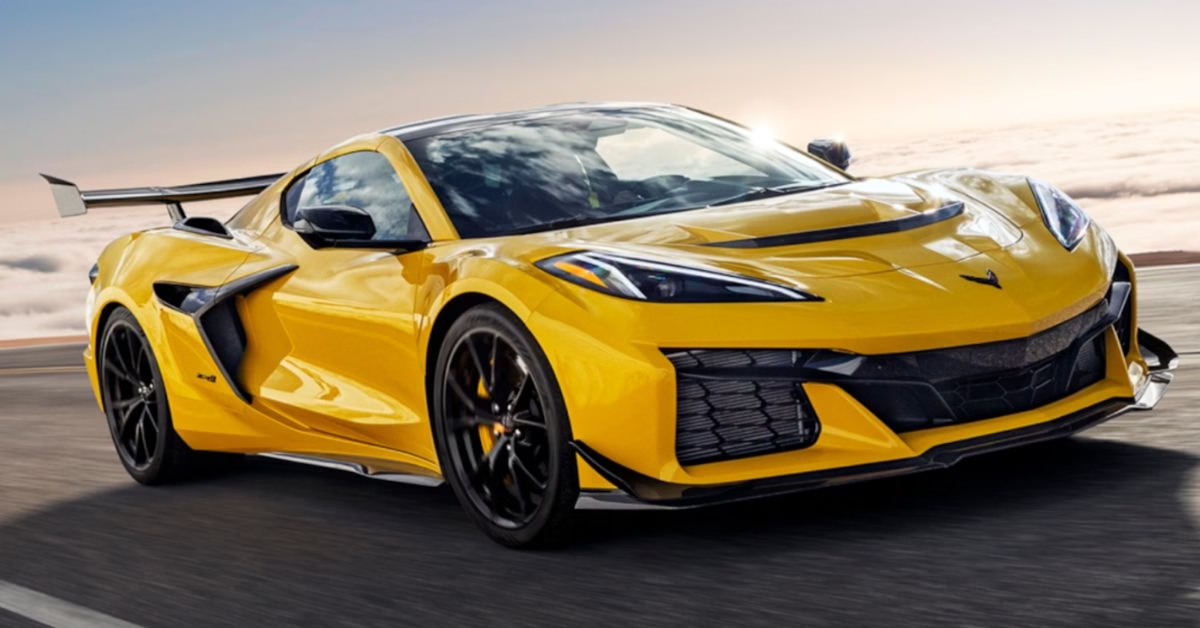
| Engine | 6.2L LT2 (Stingray), 5.5L Flat-Plane LT6 (Z06), Hybrid LT2 + eMotor (E-Ray) |
| Horsepower | 490–670 hp (Stingray, Z06), 655 hp (E-Ray) |
| Torque | 465–595 lb-ft |
| 0–60 mph | 2.5–3.0 sec |
| Transmission | 8-speed dual-clutch |
| Drivetrain | RWD (Stingray, Z06), AWD (E-Ray) |
| Curb Weight | 3,600–3,900 lbs |
| Production Volume | Ongoing |
| Approx. Price Today | $65,000–$150,000+ |
Origins and Design Direction
The C8 flipped the script. After decades of front-engine Corvettes, Chevy finally went mid-engine—something fans had speculated about since the ’60s. This wasn’t just a change for the sake of it. Global rivals like Porsche and McLaren had been eating into Corvette’s performance image, and GM decided it was time. With Tom Peters handling the design and Tadge Juechter overseeing the engineering, the goal was bold: deliver exotic performance without exotic pricing.
Engineering Highlights
At launch, the Stingray came with a 6.2L LT2 V8 mounted behind the driver, sending power through an 8-speed dual-clutch. It’s not turbocharged, and it doesn’t need to be. The naturally aspirated roar, lightning-fast shifts, and near-perfect balance make it feel alive. The chassis leans heavily on aluminum, keeping things stiff without adding weight. Add in Magnetic Ride Control, an e-diff, and a launch mode that bites hard, and it’s easy to forget this car starts under $70K. The Z06 takes it further with the screaming 5.5L flat-plane LT6—an 8,600 rpm monster that’s unlike anything GM has ever built.
Notable Trims and Performance Variants
- Stingray: The base car, especially with the Z51 package, is already a weapon.
- Z06: Built to hunt down lap times, with wider bodywork, upgraded aero, and that wild LT6.
- E-Ray: The first hybrid Corvette and the first with AWD—fast, silent when it wants, and shockingly usable.
- ZR1 (2025): The ultimate evolution of the C8, packing 1,064 hp with aggressive aero, carbon ceramics, and track-ready cooling.
- 70th Anniversary Edition: A collector’s trim with exclusive touches offered on both Stingray and Z06.
Among collectors, Z06s are gold, especially early builds. The ZR1 pushes values even higher, offering supercar-level performance with the Corvette badge.
Styling and Market Reception
Visually, the C8 broke every Corvette tradition. Gone are the long hoods and rear-set cabins—instead, you get sharp lines, deep side intakes, and a layout straight out of Maranello. Some diehards grumbled, but most critics applauded the bold move. Inside, the jump in quality was hard to ignore. From the squared-off steering wheel to the wraparound dash, it finally felt like a car designed for the driver. And at the price? It left European rivals scrambling.
Collector and Enthusiast Insight
The C8 pulled in a new kind of buyer. Younger, more diverse, and often cross-shopping Porsches or used Ferraris. The Z51-equipped Stingray is a favorite among track-day regulars, while early Z06s are already getting snapped up as future collectibles. The E-Ray intrigues a different crowd, and all eyes are on what comes next, especially the rumored ZR1. For now, it’s the high-spec trims and low-mile examples that are most likely to hold value.

